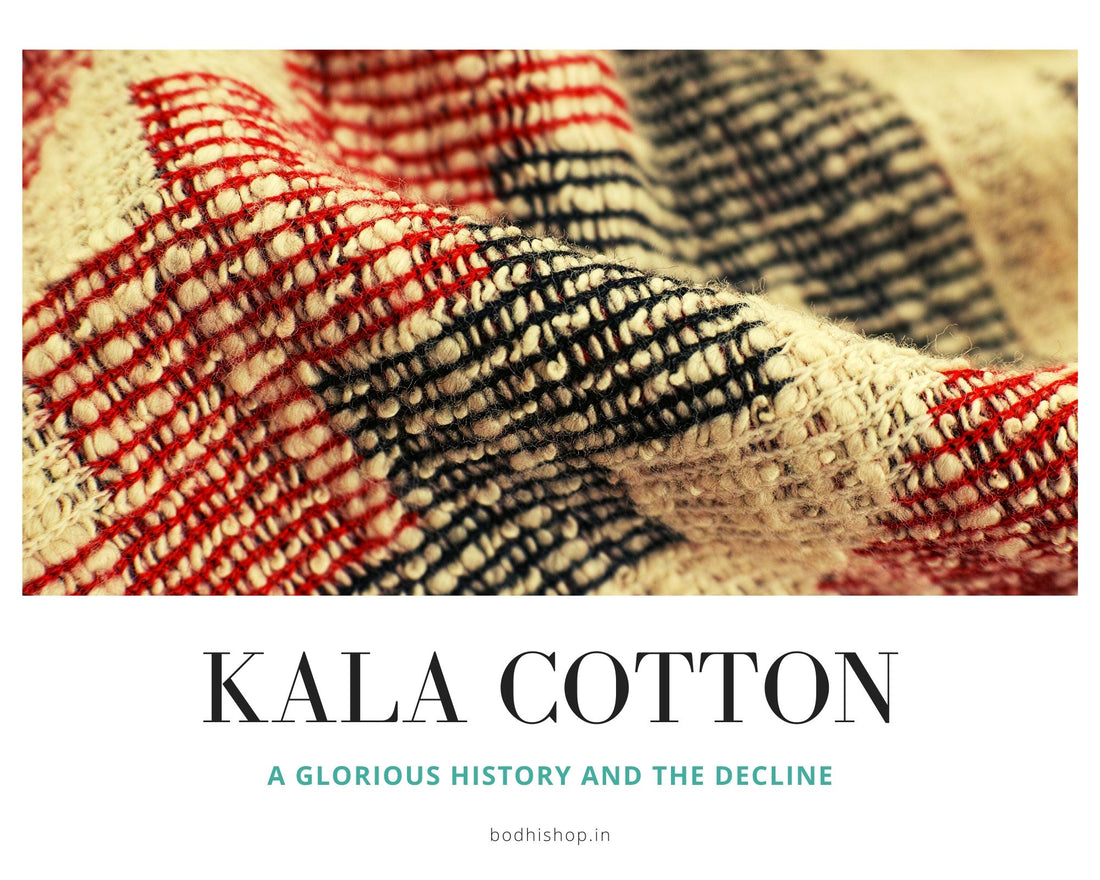
The Glorious History of Kala Cotton
Share

Kala Cotton / Kala Kapas is the original cotton of India. This cotton has been a pride of India for centuries now. Back then, the importance of our desi fabric was not as widely known as it is today. ‘The fabric which breaths’ is admired and loved by many. But what is our indigenous cotton? And why has it disappeared from the market?
The Glorious past of Indian Cotton
The use of cotton in the Indian subcontinent dates back to the Indus Valley Civilization. At that point, both rich and poor were using cotton garments. Some fragments of handwoven cotton have also been found in the ruins of Mohenjodaro. These are dated back to 5000 BCE. There is iconographic evidence that shows the use of cotton in different styles being used at the time of Harappa civilization.
The western world became curious about cotton when the early Greeks and Roman wrote about their travels to India and the cotton dresses people wore here. The Indian skill of dyeing and printing on cotton also mesmerized them.
Around 1000 CE, enterprising Gujrathi traders in India started exporting cotton towards the east. This cotton is the present-day Kala Cotton. It can be around this time when Chinese ships took cotton to china. Apart from spices, this was the most thriving business at that time. Indian cotton was the largest manufactured product from the time of the Roman Empire to the nineteenth century. The Europeans had seen that the Arabs traded with India for cotton with pepper, cloves and other spices. Europeans wanted the cotton but they had nothing which India needed, hence they had to pay in silver and gold. (Source: A Frayed History: The Journey of Cotton in India)
The beginning of the end
Around the 17th century, when the East India company colonized India, the Europeans started buying cotton from India and bringing the woven cotton back to India. The East India companies imposed laws that forced the sellers in India to sell cotton only to particular buyers. The local spinning and weaving industry in India dies because of no availability of raw material for Indians.

In the early 19th century, when the British Raj took over India, the British ships started getting machine-made cotton cloth to India and sold it at a cheaper price than local cloth. This took away the livelihood of millions of women who made a living by spinning yarn. Cotton was a major source of income for people in India. With the selling imposed by the British Raj, poverty struck India badly.
The decline of indigenous cotton in India
When India became independent, 97% of the cotton grown in India was indigenous. Today, only 2% of the cotton grown in India is indigenous. But why did this happen? The long-staple American cotton was introduced in India when it became independent. It had bigger flowers and was easy to pluck. Similar reasons are prevalent for BT cotton. In 2002, genetically modified BT cotton took over and the indigenous cotton production fell to 25% of the total cotton produced.
There is still hope...
Indigenous cotton is native to India. Kala cotton of Kutch, formerly known as Wagad cotton, is native to Gujrat and is by default organic because the farmers do not use any chemical-based pesticides and fertilizers. It is a purely rain-fed crop that has a high tolerance for both disease and pests. This makes it better for the farmers because they get to work in chemical-free fields and produce the highest quality product. It works for the consumer because the get a great product that is grown in a sustainable way. In recent years, people have started spreading information about the importance and benefit of using organic cotton. Many designers are working towards introducing organic cotton in their collections. Slowly, Kala cotton is creating a new identity in the market.
The next step
We at Bodhishop.in always strive towards empowering the indigenous products which support our desi cows. Organic cotton does not need chemicals but desi cow Panchagavya. As a motivated desi startup, we have introduced a new collection with Kala cotton on our website. Designers are working towards creating fashion using Kala cotton. In the coming few months, we will introduce more designers who are supporting the desi movement.
Please help us in sharing the benefits of organic cotton and the amazing history behind it. Comment on the post if you know any interesting facts about our heritage cotton.
This article is a property of Bodhishop.in Any unauthorized duplication, reproduction or publication is strictly prohibited. Contact support@bodhishop.in for licensing of the above article.

1 comment
We want to promote Kala cotton and tag it and market it , kindly advise how to go about it , thanks